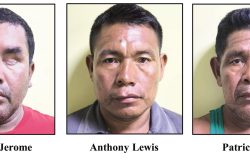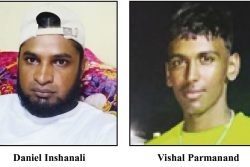The introduction of the Caribbean Secondary Schools (CSEC) examination in Guyana and the rest of the Caribbean has brought with it accompanying innovations in the education system including the School Based Assessment (SBA) and profile-based reporting on the performance of candidates in the various subject areas.
The introduction of the regional examination has also witnessed an increase in the number of examination subjects offered – from five (5) in 1979 to thirty-three (33) in 2006. We have also witnessed a simultaneous increase in the number of state-run secondary schools in Guyana -from around 55 in 1979 to 82 today – as well as the establishment of a number of private secondary schools, with and without the permission of the Ministry of Education.
The available figures indicate that the number of CXC candidates has increased from around 4500 in 1985 – by which time the examination had become firmly established in the education system and at which time the entire school system was under government control – to around 9,000 in 2006, including candidates from state and non-state secondary schools and individual private candidates. Most of the more than 9,000 candidates who sat the examination in 2006 were students of secondary schools who wrote five subjects five years after writing the Secondary School Entrance Examination, (SSEE).
It should be noted that while more than 17,000 students write the Secondary Schools Entrance Examination (SSEE) less than half of that number actually remain in secondary school long enough to complete ‘the second level’ of formal education in order to qualify themselves for employment, entrance into university or other forms of training.
No less interesting is the gender “breakdown” of the CXC candidates. Of the more than 9,000 candidates who sat the examination in 2006 5,787 or 63 per cent were females while 3,393 or 37 per cent were males. Region-wide, the statistics also indicate that female CXC candidates (88,656 or 64 per cent) considerably outnumbered their male counterparts. (49,464 or 36 per cent). Twenty years ago female CXC entrants outnumbered their male counterparts by 60 per cent to 40 per cent, a statistic that worried regional educators. The current statistics clearly suggest that twenty years later there is even greater cause for concern.
The suggestion in some quarters that Guyana’s performance at the CSEC examination has improved over previous years is based on the fact that 55.8 % of the country’s candidates secured Grades 1-3 at the General and Technical Proficiencies while 78.8% obtained Grades 1-4. It is, however, the individual performances in the various subject areas that provide the more revealing and less encouraging picture of candidates’ performance at the examination.
While prize-giving or graduation functions at secondary schools are customarily used to sing the praises of students and laud the overall results the concealment of actual numbers serve to lull applauding parents and well-wishers into a false sense of security. It is, for example, “misleading” to baldly state that school X or Y recorded 80 per cent passes in Food and Nutrition when the really significant statistic is that the school entered only five students for that examination.
A cursory glance at our 2006 examination results gives rise to pronouncements of 80+% passes at Grades 1-4 in 33 out of 35 subjects. While these results may at first appear praiseworthy the truth is that many of the 35 subjects were written by fewer than 750 students in the entire country. Indeed, it is probably not by accident that results are reported using percentages rather than actual passes despite the fact that it was necessary to aggregate those actual passes in the first place in order to arrive at the percentages.
Another significant flaw in the chosen method of presenting the examination results is the failure by institutions to present results on the basis of the number of subjects passed by students, whether passes are counted as Grades 1-3 or as Grades 1-4. In effect we cannot really determine, based on the current method of presenting the examination results, how many students in our schools have been successful in five or more subjects, including English A, or including English A and Mathematics. Indeed, we do not even know how many students in our schools have passed in any five or more subjects. Surely, it is important to have a clear idea of the number of students graduating from our secondary schools with acceptable qualifications for responsible jobs and for further post-secondary education.
The CXC statistics indicate that, region-wide, in 2004, 2005, and 2006 the percentage of candidates securing Grade 1-3 passes at the General/Technical Proficiencies was approximately 17.2, 18.6, and 18.1% for the respective years, hardly figures to “write home” about.
The best estimate for success at more than five subjects in secondary schools in Guyana suggest that a maximum of 1000 candidates -of which at least half are students of the seven (7) senior secondary schools-accomplish this goal. What in effect this means is that our more than eighty “junior” secondary schools and private secondary schools produce, among them, at best, 500 students with passes in five or more subjects. Two questions arise from this statistic. First, what are the chances of a student attending one of the more than eighty “junior” secondary schools gaining passes in 5 or more subjects? Secondly, what control mechanisms exist to “regulate” schools that appear to have no clear policy with regard to the number of subjects taught?
Ironically, our Secondary School Reform Project (SSRP) advocates that, at a minimum, students be prepared to write the four core subjects -English, Mathematics, Integrated Science and Social Studies as well as at least one Technical/Vocational subject and that schools concentrate on those Technical/Vocational subjects that they are best able to teach rather than spread themselves more thinly across less a broader range of subjects.
The 2006 state schools’ CSEC results reflect, among other things, the abilities of our teachers, the limits to the resources at their disposal, the availability and use of curriculum material and the management and monitoring of schools. In effect, the results reflect the extent of the coverage of the curriculum from Forms I to V in our schools. Additionally, although official policy dictates that all students be offered the same programme from Forms I to III it has become altogether commonplace for some schools to offer the “single sciences” and Business Education subjects from Form III only on the grounds that there is insufficient time to cover the syllabus in Forms IV and V.
It is of course no secret that the dire shortage of experienced teachers in some subject areas has spawned the “extra lessons” culture which, presumably, allows more students to benefit from tuition by the fewer available teachers. If we accept that the examination success rate is attributable to the additional financial sacrifice of parents and the additional physical and mental exertion of the beneficiaries of “extra lessons” then the actual success rate attributed to the established secondary schools – and which gives rise to much misleading gloating at the various prize-giving functions – becomes even more questionable.
While, in principle, the implementation of the concept of Universal Secondary Education (USE) is designed to reduce the post-primary movement by students across the country and is based on a policy that is altogether rational, the respective performances by secondary schools countrywide at the CSEC examination raises justifiable doubts in the minds of parents regarding the fairness of that system. It is clear that the USE system must go beyond the construction and commissioning of new secondary schools and must be extended to ensure, as far as possible, that all secondary schools are able to offer a comparable quality of tuition for students.
While the C
SEC results appear to suggest that we need to be more concerned about the effectiveness of some of our secondary schools, especially those in Regions One, Seven, Eight and Nine -where the majority of the students belong to a minority ethnic group- it is also important that educational statistics be compiled based on ethnicity across the country. There is, for example, no data to determine whether the children of the country’s two major ethnic groups are achieving results in consonance with their numerical representation in the population. These statistics are important since underachievement in examinations by a major grouping over a protracted period can lead to frustration and resentment.
In the final analysis the manner in which the CSEC results are presented appears designed to tell us what we want to hear rather than what we ought to hear. Much good can be derived, for example, from emulating the practice in Jamaica of using the media to publish summaries of the CSEC performances of individual schools. It is only when we begin to reveal the salient facts of Guyana’s performance at the CSEC examination that we can begin to take appropriate remedial action to remedy those weaknesses that limit our success rate.








